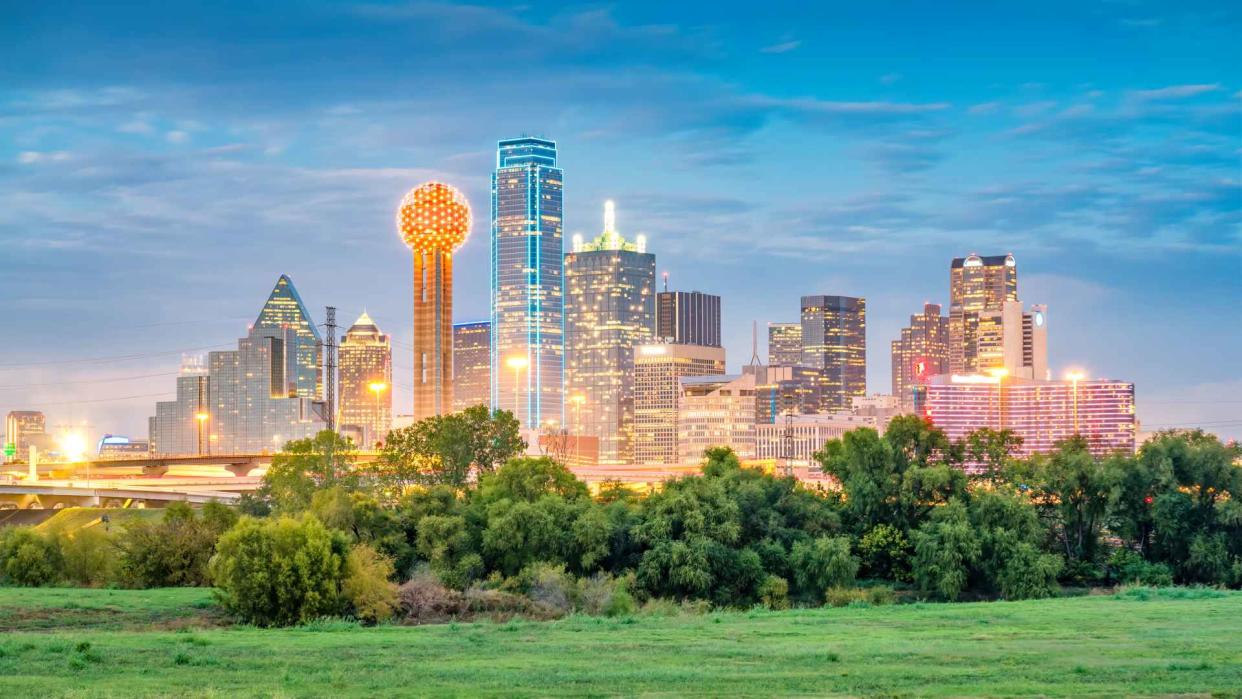3 Cities Where Inflation Has Risen the Most Over the Last Year

Economic challenges stemming from the COVID-19 pandemic caused inflation to spike around the world. In the U.S., it hit a 40-year high in 2022, according to Pew Research. Fortunately, the inflation rate is starting to cool off, but it’s still impacting the cost of living in many cities.
Check Out: Here’s the Income Needed To Be in the Top 1% in All 50 States
Try This: $10K or More in Debt? See If You Could Become Debt-Free (for Less Than You Owe)
Three cities, in particular, are still seeing rapidly rising prices: Dallas, Honolulu and New York City. This article will dive into the rising prices in these three cities.
Also find savings accounts that are beating inflation.
The State of Inflation in 2024
Inflation rates have slowly fallen in the past two years. After spiking to 8.5% in the first quarter of 2022, the annual rate now sits at 3% in the U.S.
Does that mean things are getting cheaper? Not necessarily. Inflation rates indicate the speed at which prices are rising. In other words, costs aren’t rising as quickly today as they did two years ago, but they’re still going up. You’ve probably felt the effects of inflation at the grocery store and shopping center. Depending on where you live, you may have also experienced a rent hike as landlords try to keep up with the rising prices.
We can look at the average inflation rate to get a picture of how costs are rising in the whole country. However, the rates aren’t consistent in every city and state. Inflation rises when demand outpaces supply, so areas that experience a sudden rise in demand — due to more people moving to the area, a spike in employment or supply shortages — will experience higher inflation than other places.
Learn More: How I Went From Middle Class to Upper Middle Class
Where Are Prices Rising Fastest in 2024?
Dallas, Honolulu and New York all experienced higher inflation over the past year than any other U.S. city. Here’s a breakdown of the rising costs in each of these three cities.
1. Dallas
The Dallas-Fort Worth area experienced a 5% rise in consumer prices in the last year. Prices have also gone up by 1% in the past two months.
In Dallas, the cost of living is around 3% higher than the national average, sourced from PayScale. Here’s what that looks like in terms of everyday prices:
One month’s rent: $1,323
Gallon of milk: $2.32
Non-emergency doctor’s visit: $140.65
While these prices aren’t as high as in other parts of the country, they are rising quickly, which can put a strain on Dallas residents. The higher inflation in Dallas might be caused by a housing shortage as more people move to the city. Increasing energy costs and urban sprawl can also play a role in driving prices higher.
2. Honolulu
In urban Honolulu, consumer prices have risen 5.2% in the past year and 0.7% in the past two months.
Honolulu is one of the most expensive cities in the U.S. Prices are currently 84% higher than the national average, with the biggest disparity in housing — housing costs in Honolulu are 214% higher than average, from PayScale.
Here’s what that looks like in practice:
One month’s rent: $4,309
Gallon of milk: $3.64
Non-emergency doctor’s visit: $146.89
Like in other Hawaiian cities, a shortage of affordable housing is driving inflation in Honolulu. Other factors might include supply shortages in Hawaii, high energy costs and an influx of high-income residents.
3. New York
New York City experienced a 4.2% rise in consumer prices in the last year. In the past two months, prices rose 1.1%.
The cost of living in New York is a whopping 128% higher than the national average, reported PayScale. Housing is the most expensive category, at 385% above average.
In terms of everyday prices, here’s what to expect:
One month’s rent: $6,642
Gallon of milk: $3.27
Non-emergency doctor’s visit: $135.28
The rising prices in New York have made an already-pricey city even more expensive for the average resident.
What Can You Do About Inflation?
Unfortunately, there’s little the average consumer can do about high prices. But you can take some steps to save on your everyday purchases, including:
Switching to store-brand groceries
Canceling subscription services
Shopping secondhand
Repairing instead of replacing
Cooking at home
As inflation rates continue to go down in the U.S., hopefully, residents of even the most expensive cities will see lower rates in the coming months and years.
More From GOBankingRates
This article originally appeared on GOBankingRates.com: 3 Cities Where Inflation Has Risen the Most Over the Last Year






